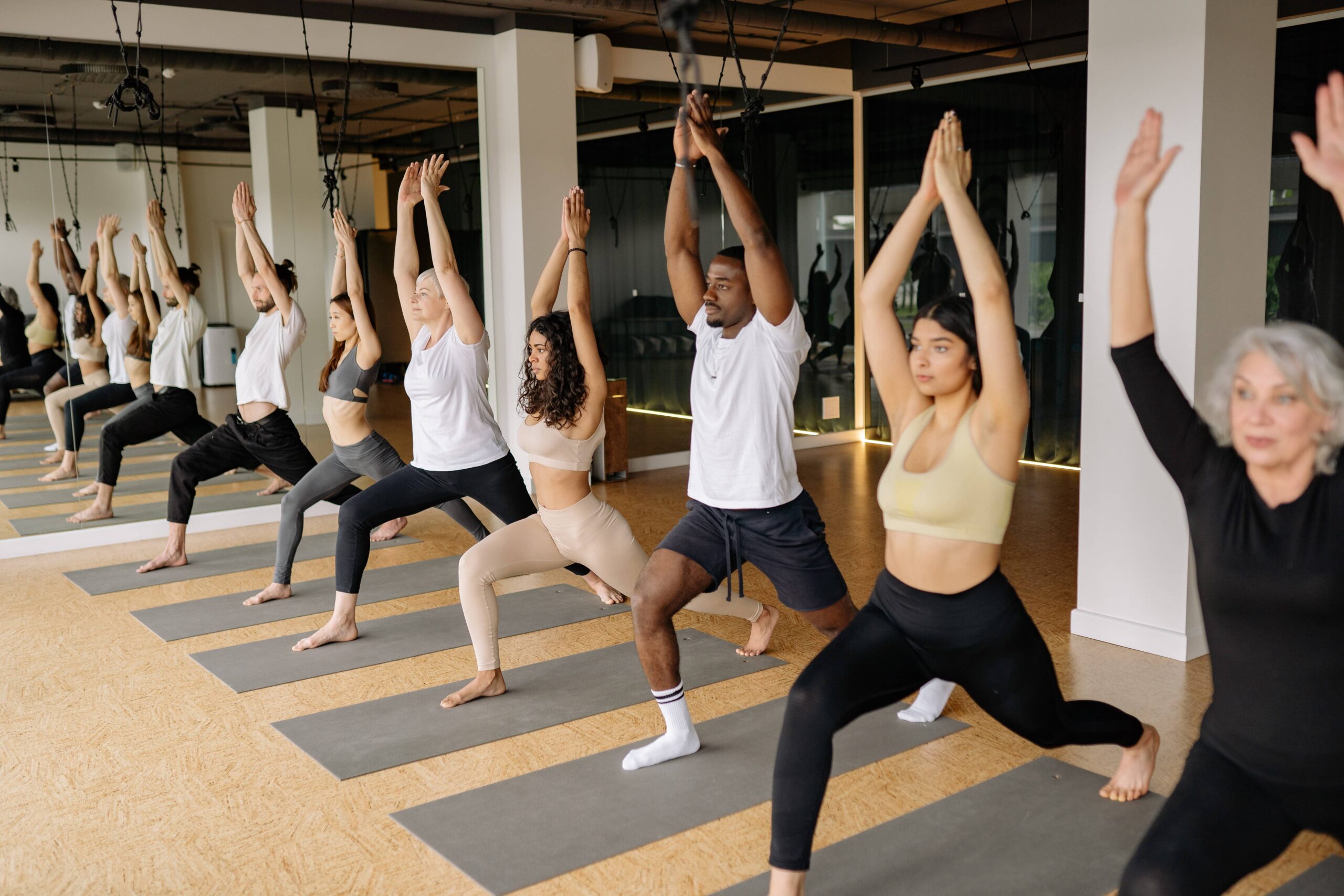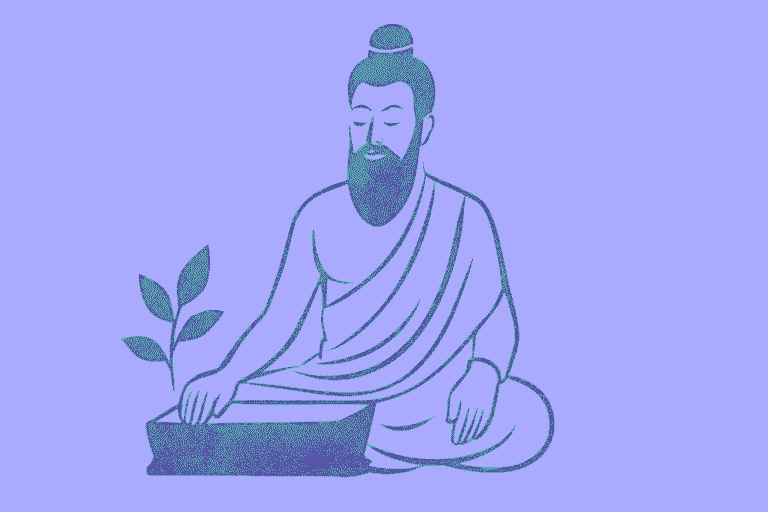contact@cayeit.com
Yoga is a holistic practice that originates from India. It encompasses physical postures (asanas), breathing exercises (pranayama), and meditation, cultivating a deep sense of physical, mental, and spiritual well-being. In this article, we’ll walk you through the top 10 yoga poses that can provide numerous health benefits, enrich your practice, and potentially unlock a deeper sense of joy and contentment in your life. Remember, it’s important to listen to your body during these poses, avoiding any movements that cause pain or discomfort.
- Tadasana (Mountain Pose)
- Description: This foundational pose promotes balance and grounding.
- Muscles & Joints Involved: Core, thighs, ankles, and spine.
- Health Benefits: Improves posture, balance, and stability; strengthens the core and legs.
- Steps: Stand tall with your feet hip-width apart, hands by your sides. Engage your thighs and core, reaching the crown of your head towards the sky. Take deep breaths, feeling your connection to the earth.
- Precautions: If you have balance issues, practice near a wall for support.
- Adho Mukha Svanasana (Downward-Facing Dog)
- Description: A fundamental pose that stretches and strengthens the whole body.
- Muscles & Joints Involved: Hamstrings, calves, shoulders, arms, wrists, and spine.
- Health Benefits: Stretches the back and hamstrings; builds upper body strength; promotes blood circulation to the brain.
- Steps: From all fours, lift your hips up, straightening your legs and arms, forming an inverted ‘V’. Press your palms and heels down. Engage your core and keep your neck relaxed.
- Precautions: Avoid if you have severe carpal tunnel syndrome or late-term pregnancy.
- Balasana (Child’s Pose)
- Description: A calming, restorative pose that provides a gentle stretch to the back.
- Muscles & Joints Involved: Spine, hips, thighs, and ankles.
- Health Benefits: Relaxes the body and mind; stretches the lower back; encourages steady breathing.
- Steps: Kneel on the floor, sitting on your heels. Lean forward, extending your arms in front, and rest your forehead on the mat.
- Precautions: Avoid if you have knee injuries.
- Virabhadrasana II (Warrior II)
- Description: A powerful standing pose that develops strength and focus.
- Muscles & Joints Involved: Legs, arms, core, shoulders, and hips.
- Health Benefits: Strengthens the legs and core; opens the hips and chest; promotes concentration and balance.
- Steps: From standing, step one foot back, turning it out 90 degrees. Bend your front knee, stretch your arms out to the sides, and gaze over your front hand.
- Precautions: Avoid if you have severe hip or knee issues.
- Trikonasana (Triangle Pose)
- Description: A pose that opens the body and stretches the muscles.
- Muscles & Joints Involved: Legs, hips, torso, shoulders, and neck.
- Health Benefits: Strengthens legs and core; stretches the spine, hips, and hamstrings; improves balance.
- Steps: Stand tall, step one foot out, turning it 90 degrees. Extend your arms to the sides, then lean over your front leg, resting your hand on your ankle or shin, and reach your other arm towards the sky. Look upwards, if comfortable.
- Precautions: Those with balance issues should practice against a wall.
- Vrksasana (Tree Pose)
- Description: A balancing pose that cultivates focus and tranquility.
- Muscles & Joints Involved: Legs, ankles, core, and spine.
- Health Benefits: Strengthens legs and ankles; improves balance and concentration; fosters calmness.
- Steps: Stand tall. Shift your weight onto one foot and bring the sole of the other foot to the inside of your standing leg. Join your palms at your chest or reach them upwards. Keep your gaze steady.
- Precautions: Avoid if you have balance difficulties. Use a wall for support if necessary.
- Bhujangasana (Cobra Pose)
- Description: A back-bending pose that energizes and opens the chest.
- Muscles & Joints Involved: Spine, chest, shoulders, abdomen, and hips.
- Health Benefits: Strengthens the spine; opens the chest and shoulders; promotes better breathing.
- Steps: Lie on your stomach with your hands under your shoulders. Pushing into your palms, lift your chest off the ground, engaging your back muscles. Keep your gaze forward.
- Precautions: Those with lower back or wrist injuries should be cautious. Maintain a height that feels comfortable.
- Paschimottanasana (Seated Forward Bend)
- Description: A calming forward bend that stretches the spine and legs.
- Muscles & Joints Involved: Spine, hamstrings, and hips.
- Health Benefits: Stretches the spine and hamstrings; calms the mind; can relieve digestive issues.
- Steps: Sit with your legs stretched in front of you. Reach towards your toes, bending from the hips. Keep your spine straight.
- Precautions: Those with back conditions should keep the spine straight and bend only as far as comfortable.
- Savasana (Corpse Pose)
- Description: A relaxing pose that often concludes a yoga practice.
- Muscles & Joints Involved: Entire body.
- Health Benefits: Relaxes the entire body; reduces stress and anxiety; promotes mental clarity and calmness.
- Steps: Lie flat on your back, legs apart, and arms by your sides, palms facing upwards. Close your eyes and focus on your breath.
- Precautions: Those with lower back discomfort can place a rolled towel under their knees.
- Sukhasana (Easy Pose)
- Description: A seated pose often used for meditation.
- Description: Muscles & Joints Involved: Hips, knees, and ankles.
- Health Benefits: Promotes inner calm; opens the hips; aligns the spine.
- Steps: Sit on the floor with your legs crossed. Rest your hands on your knees, and lengthen your spine, sitting tall.
- Precautions: Those with hip or knee issues can sit on a cushion to raise the hips.
Yoga is a journey of self-discovery and acceptance. By including these 10 foundational poses in your practice, you can enjoy the full spectrum of yoga’s benefits, enhancing not only your physical well-being but your mental and emotional health as well. Remember, consistency is key, and always listen to your body’s signals. Every pose can be modified to suit your current level of flexibility and strength. If you’re new to yoga, it’s advisable to learn these poses under the guidance of a certified yoga instructor to ensure proper alignment and avoid injuries.
No matter where you are in your Yoga journey, these poses offer a way to ground yourself, improve your strength and flexibility, and connect with your inner peace and tranquility. It’s not about performing the poses perfectly, but about exploring your body’s capabilities and honoring where you are at the present moment.
Embrace the power of yoga, and you’ll embark on a transformative journey towards better health, happiness, and holistic well-being. In yoga, every breath you take, every moment you spend on the mat, is a step towards a more balanced and fulfilling life. So roll out your mat, strike a pose, and let the journey unfold.





